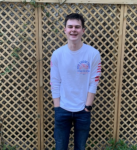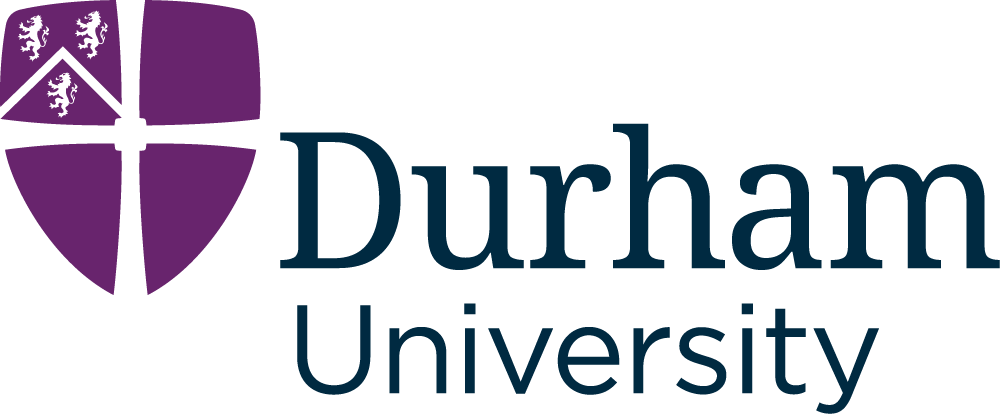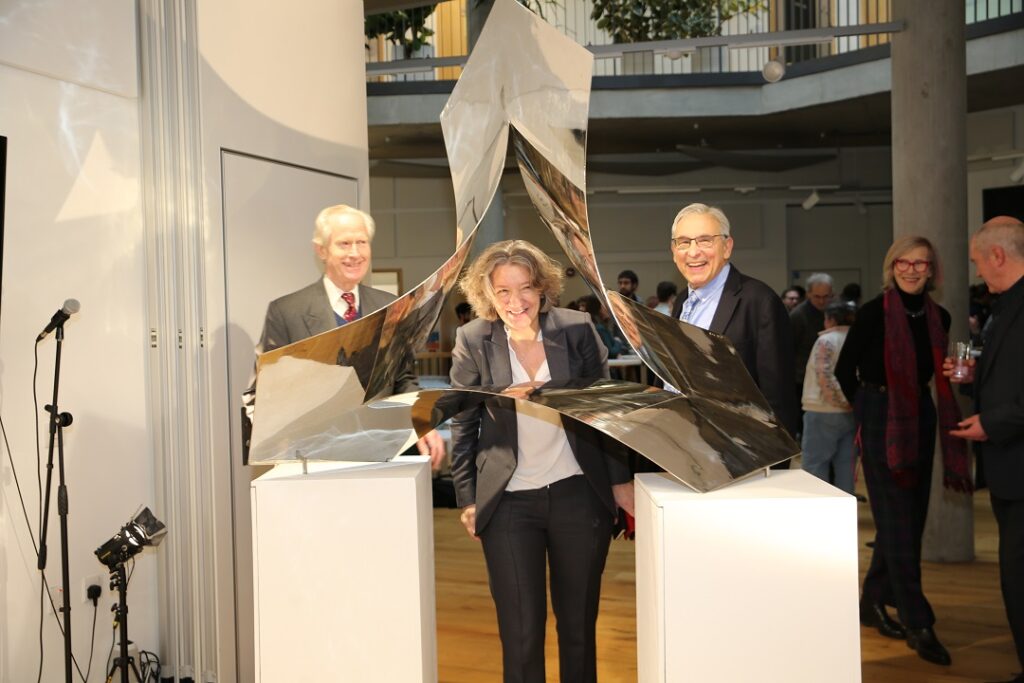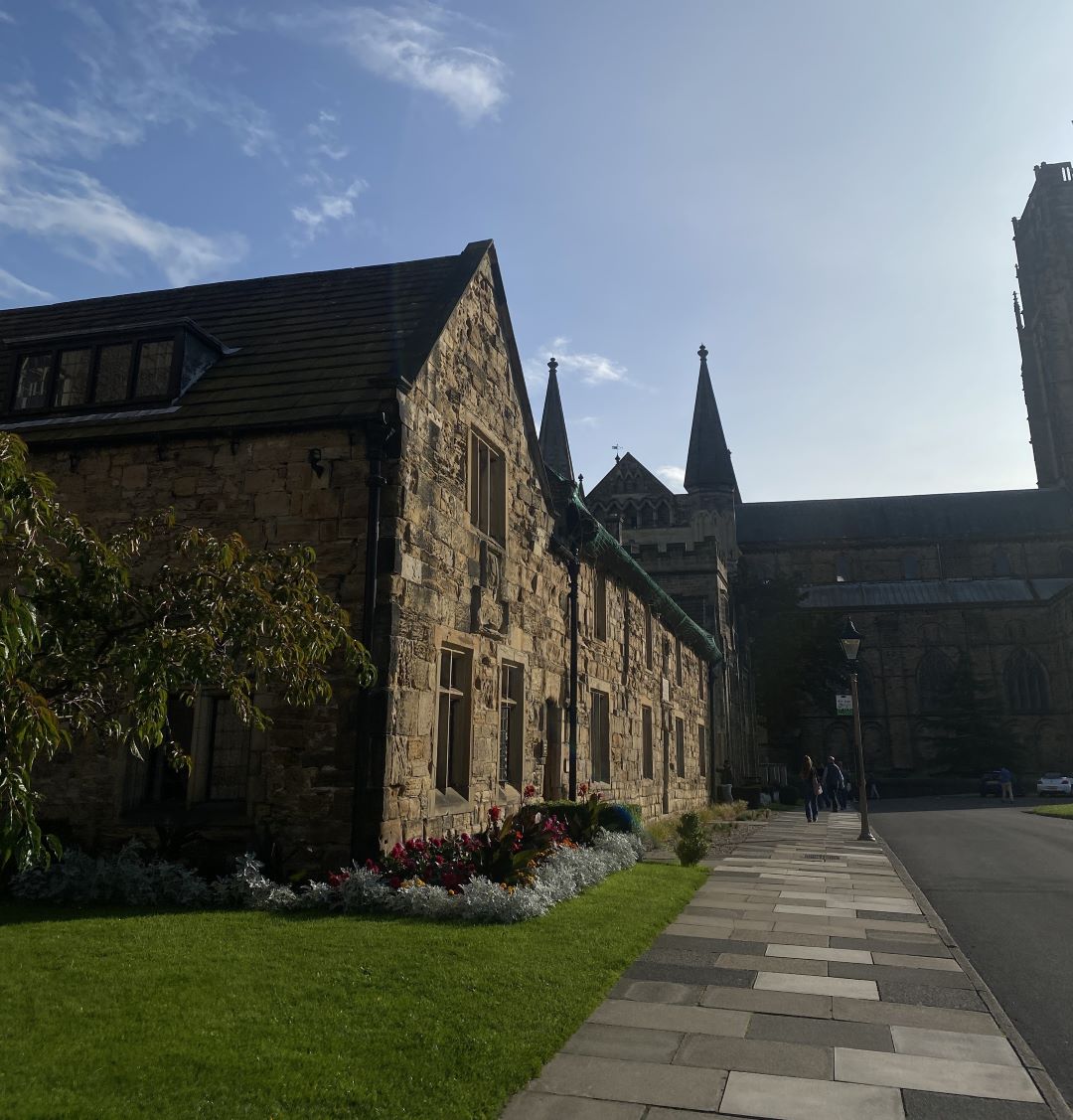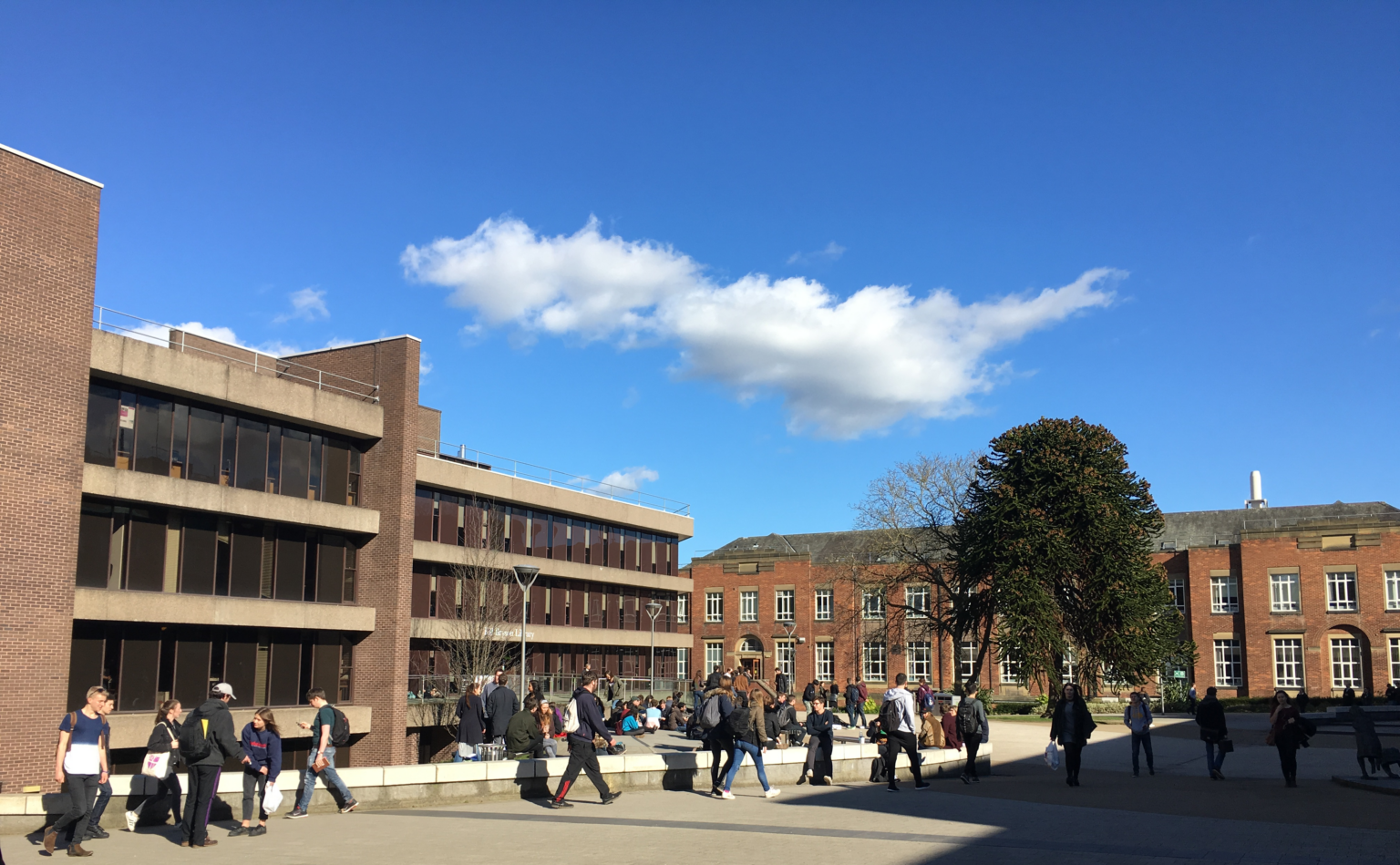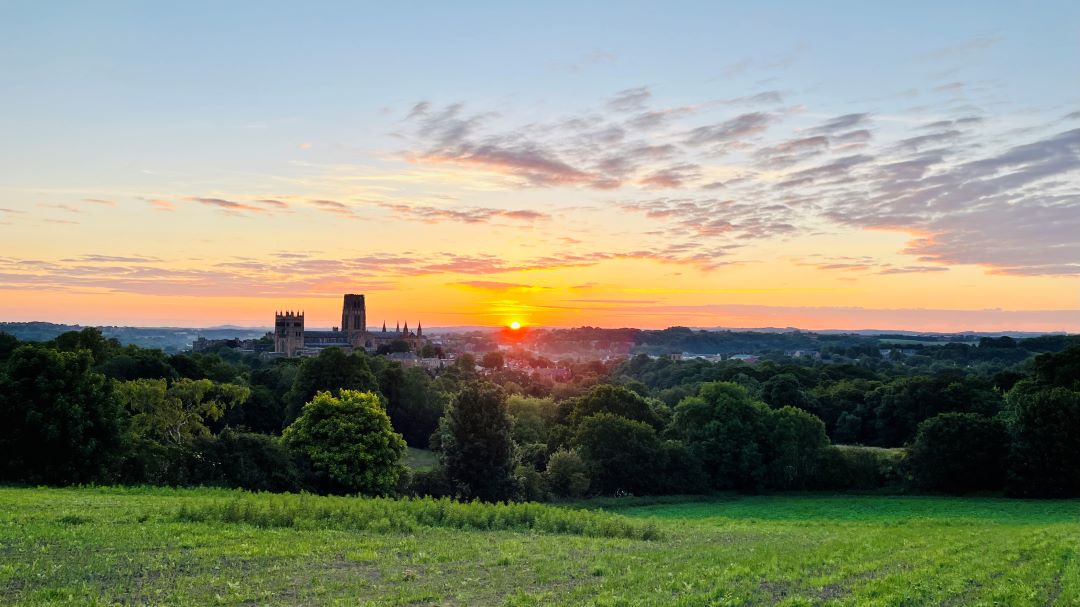above pic – Damon de Laszlo alongside Professor Karen O’Brien and Professor Carlos Frenk with the unveiled sculpture, The Journey, which Damon donated alongside Robert Hefner III. The Journey, by John Robinson, is one of many sculptures donated by Damon since the Ogden Centre opened.
20th anniversary of the Ogden Centre
To mark the 20th anniversary of the Ogden centre for fundamental physics at Durham University, a symposium was held to display the research that has been happening in the department. The symposium was headed by a visit from a special guest: Prof. Jim Peebles, a notable cosmologist who won the Nobel Prize in Physics in 2019 for theoretically displaying that the universe consists of only around 5 per cent of known matter. The rest of the universe consists of dark matter and dark energy, elusive entities we can detect but do not yet know what they consist of or how they work, a problem that still puzzles physicists.
Interesting talks
I sit in the lecture theatre with one of my housemates who also study physics. The theatre is packed with a combination of undergraduates like me, PhD students and Professors. The occasion starts with an address from Peebles about the process of the natural sciences; the ongoing effort to better understand the world around us but never really reaching the true theory but getting to a better and better approximation each time. At 87 years of age, he is still spritely, with a curious, deep mind.
The symposium continues with an address from Prof. Carlos Frenk, a prominent cosmologist who is accredited with some of the theories regarding the distribution of dark matter in the universe, amongst other things. The talk covers an overview of the challenge of dark matter: what exactly is it? Frenk is a lively figure, his slideshow adorned with the universe next to the works of art of Dali, as well as a picture of him with Brian May, the guitarist of Queen who also happens to be an astrophysicist.
The next couple of hours proceeds with the work of early career scientists at the Ogden centre. We are told more about the mysterious dark energy from Dr Sownak Bose, fundamental particles known as neutrinos and how they may explain why there is more matter than antimatter from Dr Jessica Turner, an update on black hole research from the recently built gravitational wave detectors from Dr Djuna Croon, and to finish a display of simulations of how planets might form from Dr Jacob Kegerris. The talks are all very professional and are at the edge of science and what we know about the universe. After each talk, you can ask questions about their topic and learn more about something you may be curious about.
A brilliant event
Overall, it was a brilliant event. I learnt a lot about active areas of research which Durham is a part of, but also appreciated how much I as an undergraduate do not yet know and how much there is still to find out in physics – so many unanswered questions which we may one day find the answer to.
Discover more
For more information about the event visit www.durham.ac.uk/ogdenat20
Our Department of Physics is a thriving centre for research and education. Ranked 4th in the UK by The Guardian University Guide 2022, we are proud to deliver a teaching and learning experience for students which closely aligns with the research-intensive values and practices of the University.
Feeling inspired? Visit our Physics web pages to learn more about our postgraduate and undergraduate programmes.
